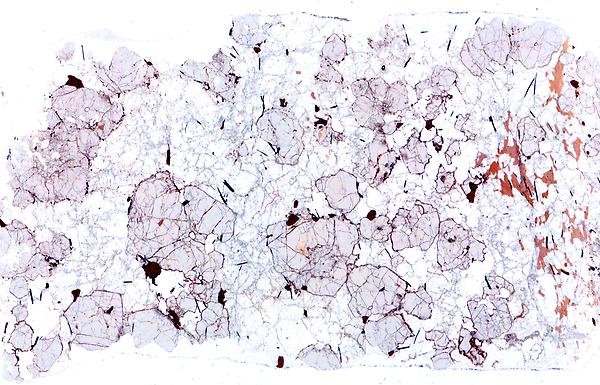Assessing the petro-chrono-logical links between garnet and accessory minerals in the deep crust

Thin section of a felsic granulite xenolith from the Pamir, Tajikistan.
Summary
The time and rate of metamorphic events is crucial to interpret the geodynamic evolution of an orogen. This implies a detailed understanding of the metamorphic evolution of high-grade rocks using petrogenetic minerals – typically garnet – and the timing and rate of such events, typically using accessory minerals such as zircon, monazite and xenotime. Specific trace elements are partitioned between minerals and can be used as a fingerprint to link time with the P–T evolution of a rock.
There are, however, limitations in our ability to understand this link. In this project we perform multi-approach analyses including trace element geochemistry, phase equilibria modelling and geochrono-logy on in-situ minerals using state-of-the-art infrastructures at the Vegacenter (NRM). Furthermore, garnet is a powerful mineral that not only informs on large parts of the metamorphic evolution, but can also be directly dated. Lu-Hf chronology on garnet performed in parallel (UBC, Canada) allows precise refinement and an invaluable crosscheck of accessory minerals dating.
This project is focused on two main field areas: the Western Gneiss Complex in Norway and the Pamir region in Tajikistan.
Project participants at the museum
External project participants
- Matthijs Smit, University of British Columbia, Vancouver, Canada.
- Lorraine Tual, University of Brest, France


